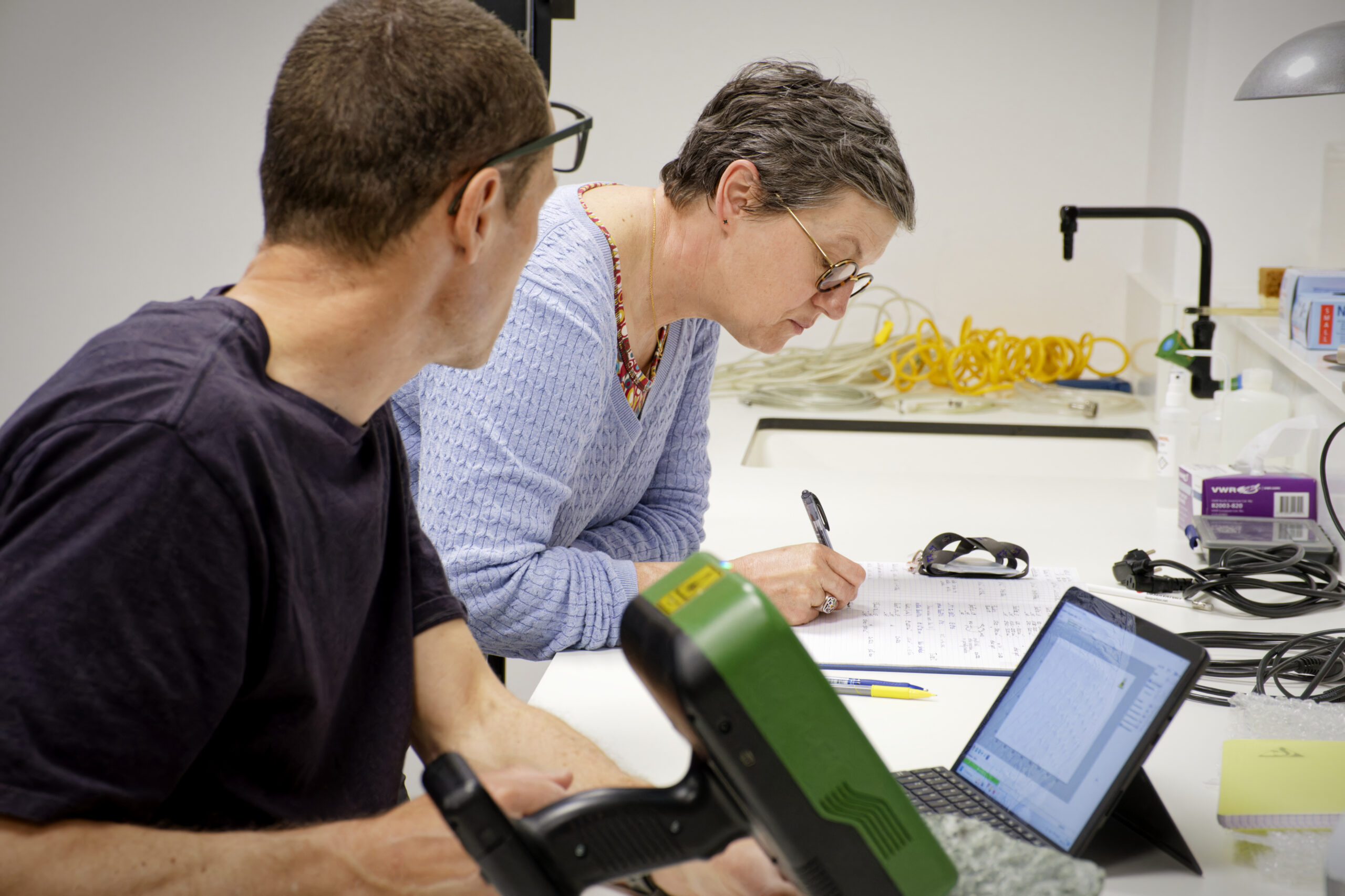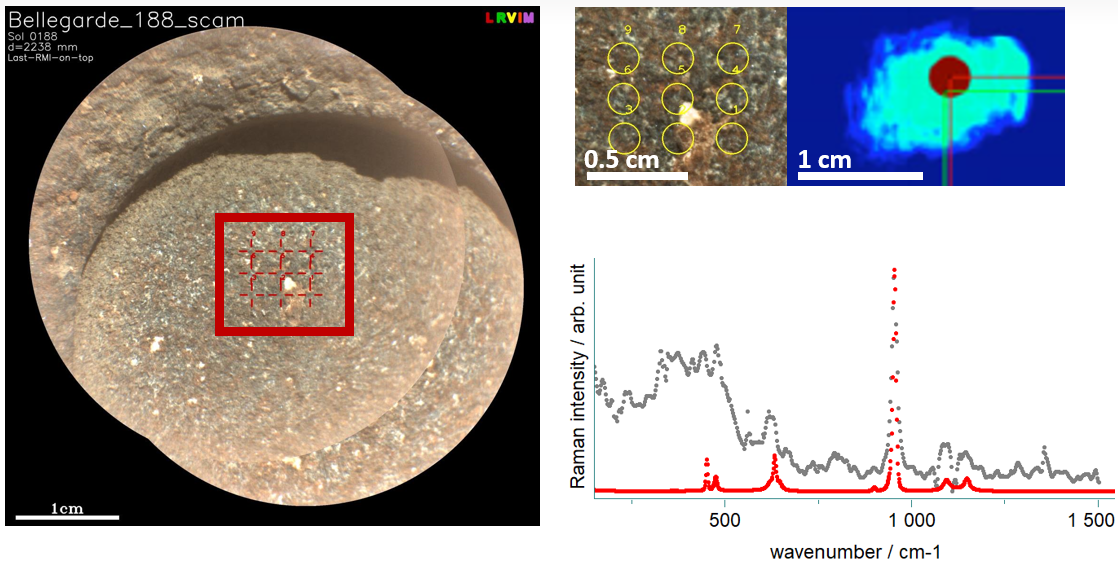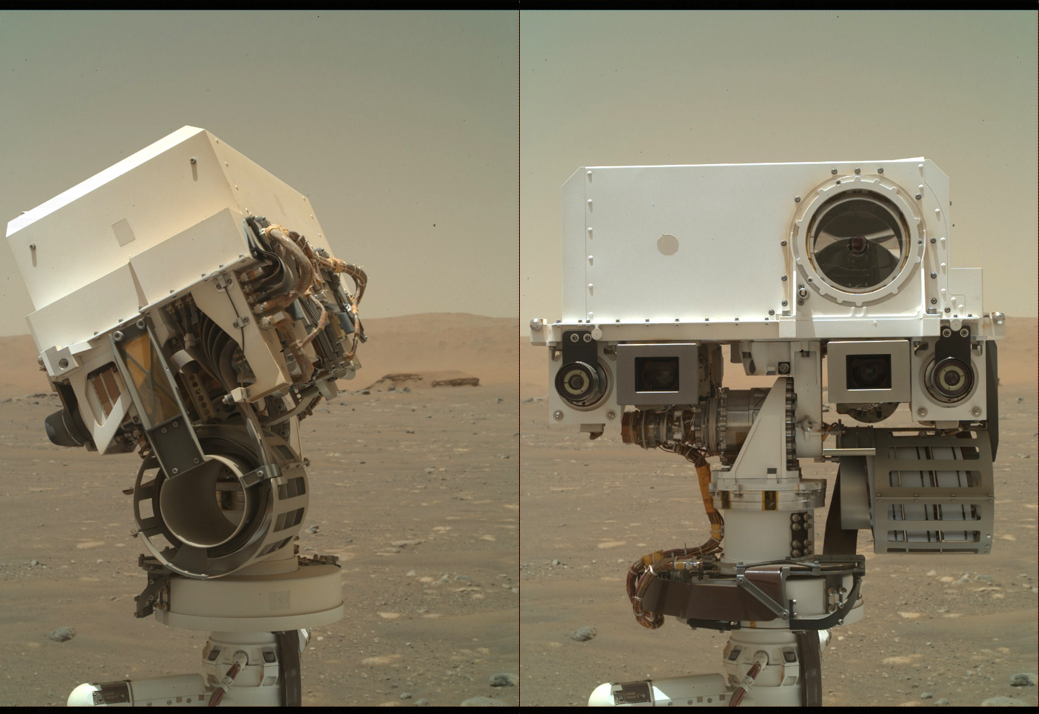REAP Raman micro-spectroscopy
Raman Experiments for Astrobiology and Planetology
Locations: ENS de Lyon, UCBL Lyon 1
Lab manager: Gilles Montagnac
Scientific director: Bruno Reynard
Data mining: Jérôme Pouilloux
Technical support: Hervé Cardon, Jostar Laforet
Contact: raman@geologie-lyon.fr
Photo Vincent Moncorgé Ⓒ

Introducing the facility
The laboratory’s Raman micro-spectrometry platform has been recognized as a reference instrument by the Institut des Sciences de l’Univers (INSU) and the RéGEF network. Analytical equipment includes 4 high-resolution Raman spectrometers and a field instrument at the ENS de Lyon site, as well as a Raman microscope at the UCBL Lyon 1 site. The wavelengths of the light sources used are: 244 nm, 248 nm, 405 nm, 532 nm, 633 nm, 785 nm. The latest acquisition is a LabRRAM Soleil equipped with the latest Raman imaging tools. One of these spectrometers is an original and unique device in the Sciences of the Universe, which has enabled the first in situ UV resonant Raman measurements at high pressure or very high temperatures.

The technique
Raman micro-spectrometry analysis is based on the scattering of light by matter (gas, liquid or solid). It is non-destructive and the probe is microscopic. Raman micro-spectrometry is easy to implement, with little or no sample preparation required, making it ideal for use upstream of a chain of analyses (IR, SEM, XRD, ICP-MS, etc.).
Its versatility enables in situ measurements under extreme conditions of pressure (0-100 GPa), temperature (77-2700 K) and tension/compression stress on solid, liquid or gaseous samples, by coupling high-pressure, high-temperature cells to the spectrometers. The laboratory has pioneered the use of Raman under extreme conditions, and the service provides inexperienced users with access and training in these cutting-edge techniques. Photo Vincent Moncorgé Ⓒ
How it works
These instruments attract not only INSU researchers, but also solid-state physicists, chemists and biologists. This multidisciplinary approach enables us to develop methods that are transferable to fields ranging from planetology and archaeology to forensics. The use of a portable Raman for field campaigns can be combined with high-resolution spectrometers in the laboratory to characterize samples.
The platform is open to scientific collaborations outside the laboratory. For training, booking or development requests, please contact the platform’s technical manager at raman@geologie-lyon.fr.
Photo Vincent Moncorgé Ⓒ


Action nationale d’observation (ANO5) of the laboratory’s Raman micro-spectroscopy platform, Observatoire des sciences de l’Univers de Lyon, OSUL.
Linked to the European Solid Spectroscopy Hosting Architecture of Databases and Expertise (SSHADE) database, REAP is a library of in situ Raman spectra of minerals and organic compounds representative of planetary systems.
Links to external websites
Database REAP CNRS Formation Entreprise - Micro-Raman Peace RéGEF



